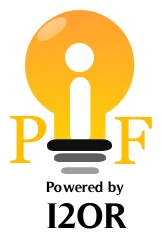Experimental Study of Wave Attenuation for a Tandem Breakwater |
| ( Volume 5 Issue 4,April 2019 ) OPEN ACCESS |
| Author(s): |
Nur Aini Mohd Arish, Othman A. Karim, Wan Hanna Melini Wan Mohtar |
| Abstract: |
|
This paper experimentally investigates the wave attenuation of a tandem breakwater. Tandem breakwater is conventional rubble mound breakwater sheltered with a seaward-submerged structure. The experimental works were done in a wave basin with dimensions of 25 m length, 18 m width and 1.2 m height. All tests were performed with regular waves generated from a piston type multi element wave maker with wave height, H = 0.15, 0.18 and 0.20 m and wave period, T= 2.05, 2.20 and 2.50 sec. Wave gauge was positioned at eight different locations to record water level and by using the measured data, the wave attenuation, WHA was calculated (WHA = 1- Kt). The objective of the experiment was to study the wave attenuation for the tandem breakwater with the influence of various angle of wave attack, 0, 15, 30 and 60 degree. Apart from the influence of angle of wave attack, the influence of relative distance between submerged and rubble mound breakwater towards wave attenuation, WHA was also been investigated. Tests are done for various breakwater spacing, (X/d = 8.33-15.56) and relative heights (h/d = 0.42-0.56). The results achieved shows that WHA are increasing along with the increasing of angle of wave attack but it is vice versa with increasing of the water depth. The highest WHA is 48.46 percent and 55.02 percent for relative distance, X/d = 6.67-8.89 (4 m) and X/d = 10.0-13.33 (6 m) respectively, both at the condition of 60° angle of wave attack. |
 DOI :
DOI :
|
| Paper Statistics: |
| Cite this Article: |
| Click here to get all Styles of Citation using DOI of the article. |
 Click Here for
Click Here for Track Your Paper

 Call for Paper
Call for Paper
